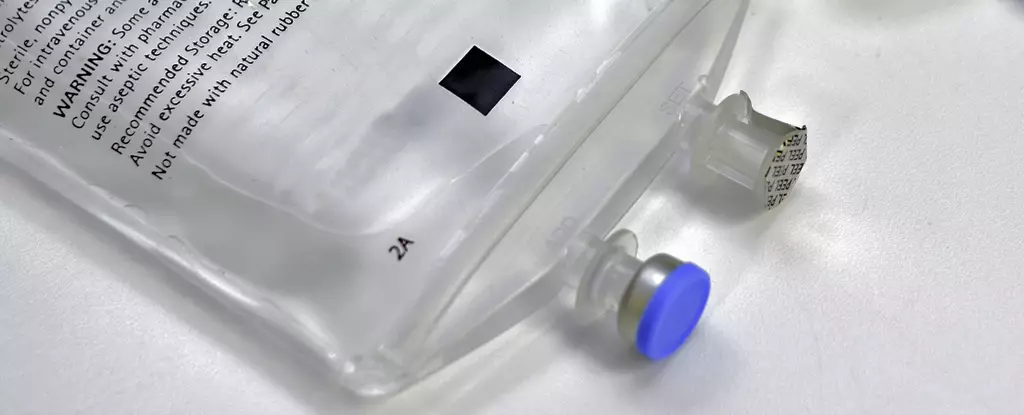Intravenous (IV) fluids play a crucial role in the healthcare system, especially when administering drugs directly into the veins. The recent shortage of IV fluids in Australia, particularly saline and compound sodium lactate (Hartmann’s solution), has raised questions about why these fluids are essential and why they cannot be easily interchanged when one runs low.
IV fluids are not simple water-based solutions – they contain a precise combination of salts, sugars, nutrients, drugs, and proteins due to a scientific principle known as osmosis. Osmosis involves the movement of water in and out of cells in the bloodstream, responding to the concentration of chemicals dissolved in the blood plasma. When the concentration is too high, blood cells shrink, which is known as a “hypertonic” state. On the other hand, too low a concentration causes blood cells to expand. The ideal concentration is called “isotonic,” which is achieved by mixing drugs with the right amount of chemicals to maintain balance inside the syringe or IV bag.
There is a range of IV fluids available for drug administration, with saline and glucose solutions being the most popular choices. While 0.9% saline is an isotonic solution of table salt and currently in short supply, the 5% glucose solution is readily available. Additionally, there are IV fluids that combine both saline and glucose, as well as other salts like sodium, potassium, calcium, and magnesium found in solutions such as Ringer’s, Plasma-Lyte, and Hartmann’s solution.
Certain drugs are only stable in specific IV fluids, which emphasizes the importance of using the correct combination to avoid adverse effects. For example, the chemotherapy drug cisplatin can be safely administered in saline but can cause kidney damage when mixed with pure glucose. Using the wrong IV fluid not only affects the effectiveness of the drug but can also lead to serious side effects or potential toxicity.
The shortage of IV fluids in Australia has prompted the government to approve overseas-registered alternative saline brands to address the high demand and manufacturing issues. This decision bypasses the normal quality checks and approval process, raising concerns about the safety and effectiveness of these imported fluids. The reliance on overseas manufacturers for critical medicines has exposed Australia to ongoing shortages, putting lives at risk.
The Australian Society of Hospital Pharmacists provides guidance on drug-IV fluid compatibility in the Australian Injectable Drugs Handbook to assist healthcare professionals in selecting appropriate alternatives during shortages. While workarounds exist to address the current shortage, the long-term solution lies in developing or supporting local manufacturing of essential medicines in Australia.
The Need for Local Medicines Manufacturing
Establishing a local manufacturing industry for medicines, particularly off-patent drugs commonly used in Australia, could reduce reliance on overseas suppliers and create stable jobs in the high-tech sector. This initiative would not only boost the economy but also mitigate future risks of global drug supply shortages, ensuring a consistent and secure healthcare system for Australians.
The critical shortage of IV fluids in Australia highlights the vulnerability of the healthcare system to external factors such as overseas manufacturing dependencies. By investing in local medicines production and prioritizing drug stability in IV fluid formulations, Australia can safeguard against future shortages and improve healthcare accessibility for its population.


Leave a Reply